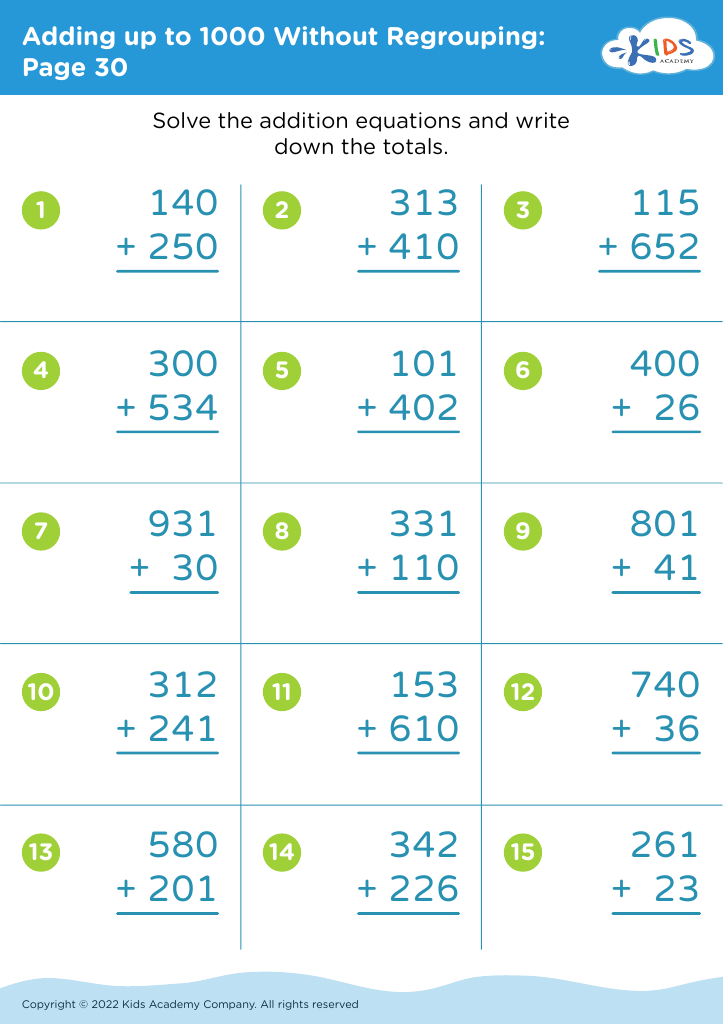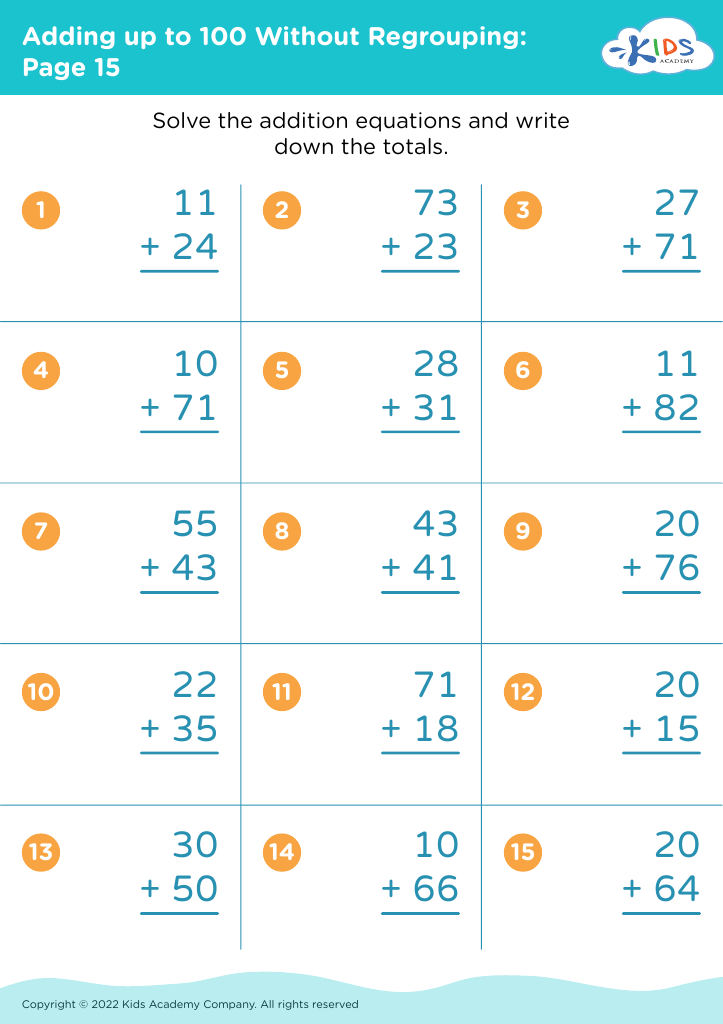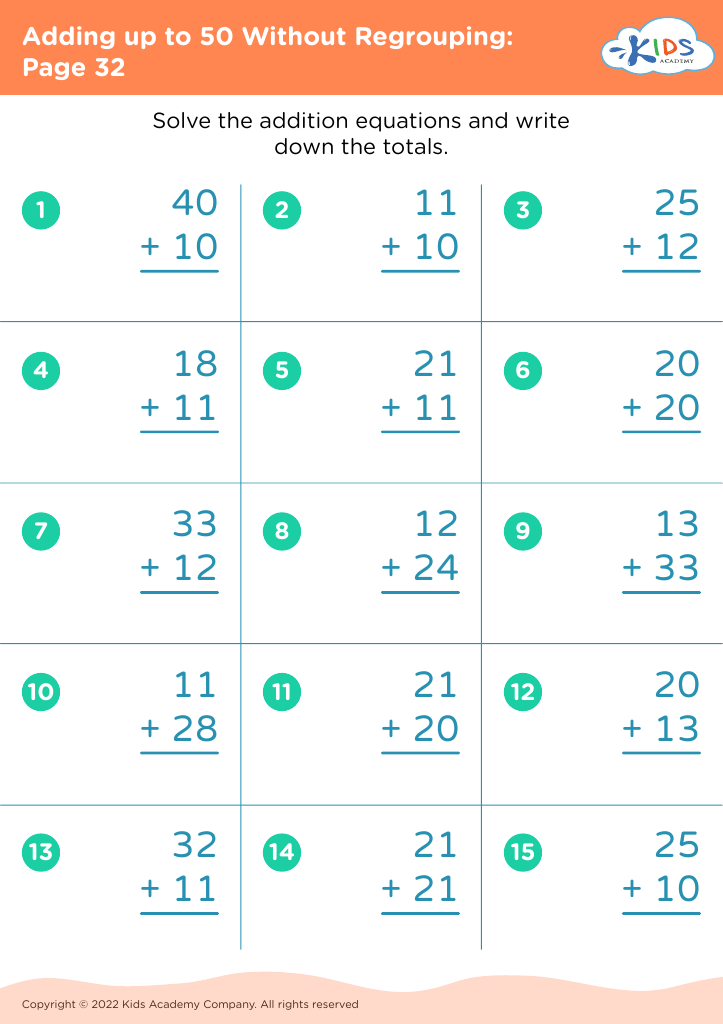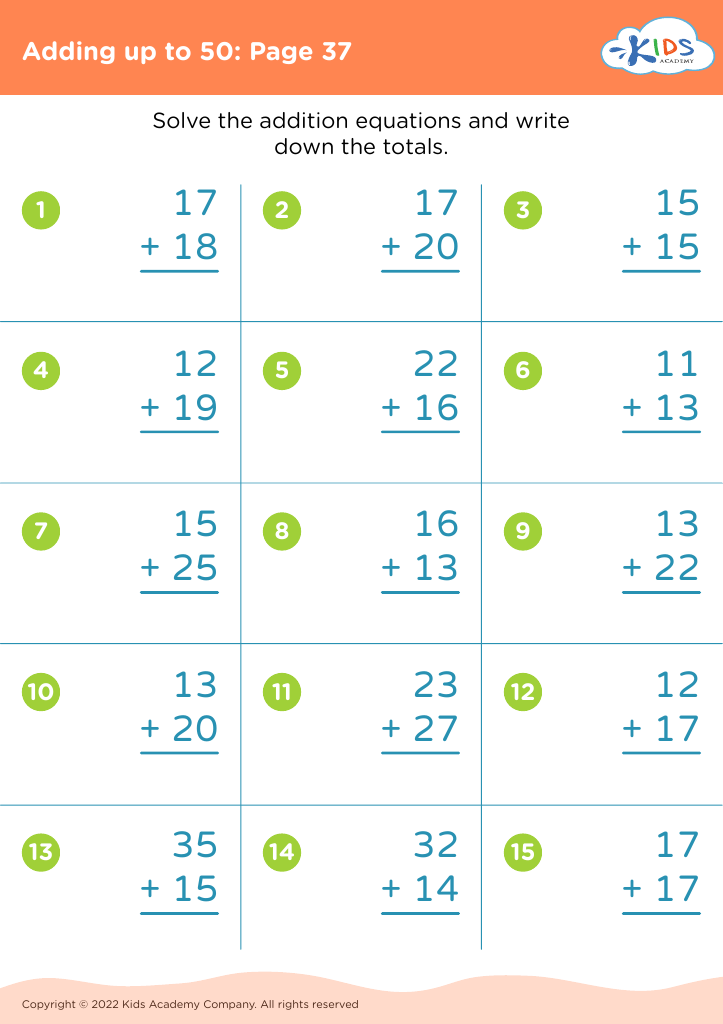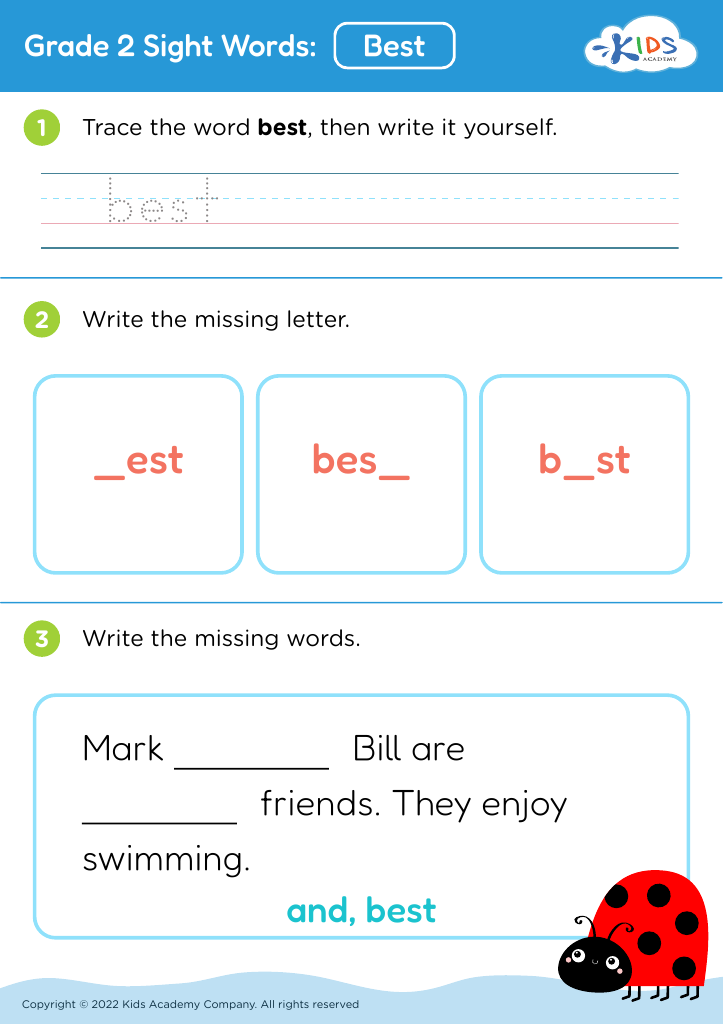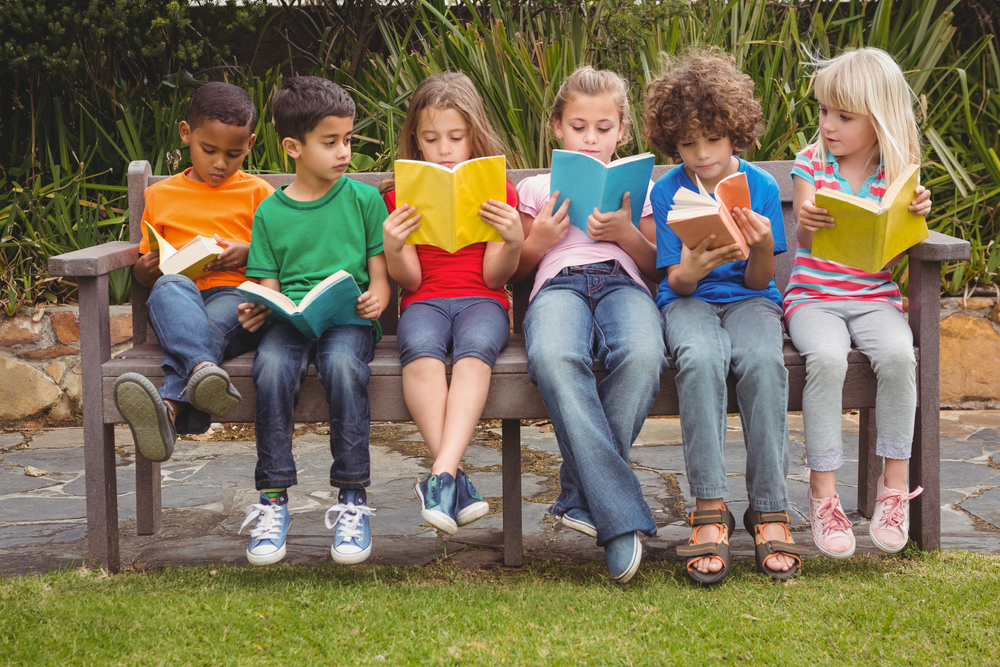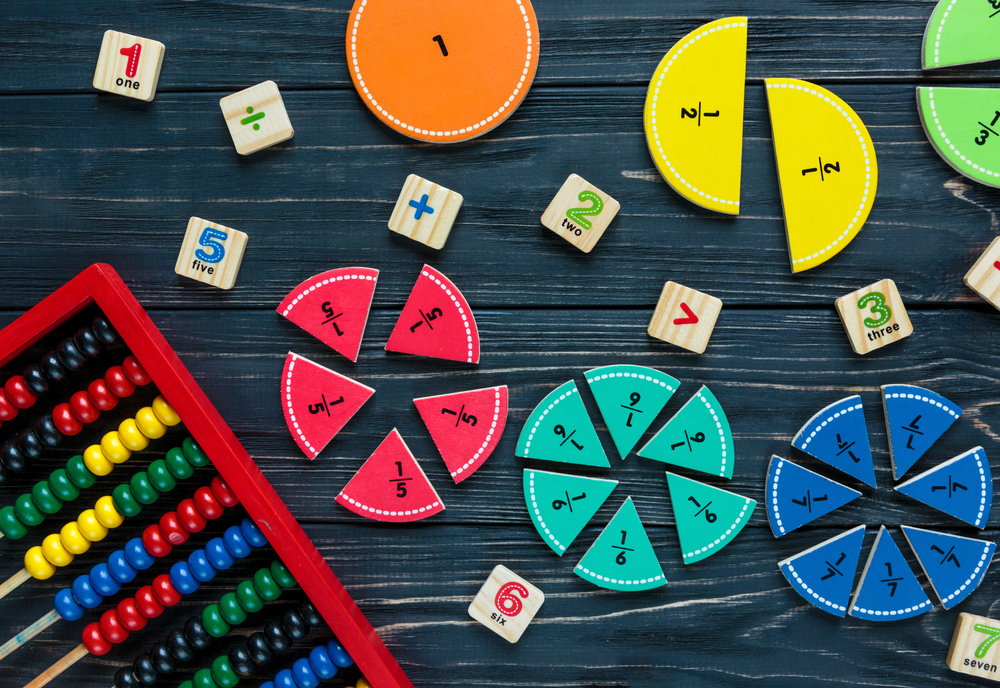Counting objects Worksheets for 7-Year-Olds
11 filtered results
-
From - To
Welcome to our Counting Objects Worksheets for 7-Year-Olds! Designed to enhance your child's numerical understanding, these printable worksheets provide engaging activities that make counting fun and interactive. Kids will enjoy counting various objects, recognizing patterns, and developing early math skills through vibrant illustrations and practical exercises. These worksheets not only reinforce counting concepts but also encourage critical thinking as children explore different quantities. Ideal for parents and educators seeking to support young learners, our resources promote confidence in math while making learning enjoyable. Grab your free worksheets today and help your 7-year-old build a strong foundation in counting and number recognition!
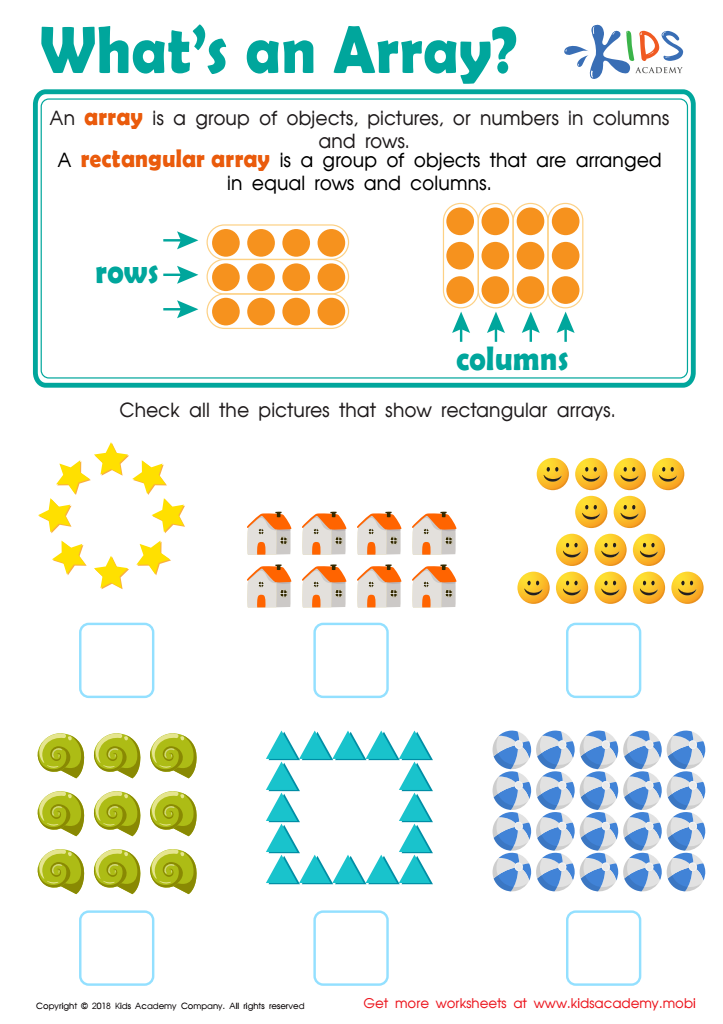

What's an Array? Worksheet
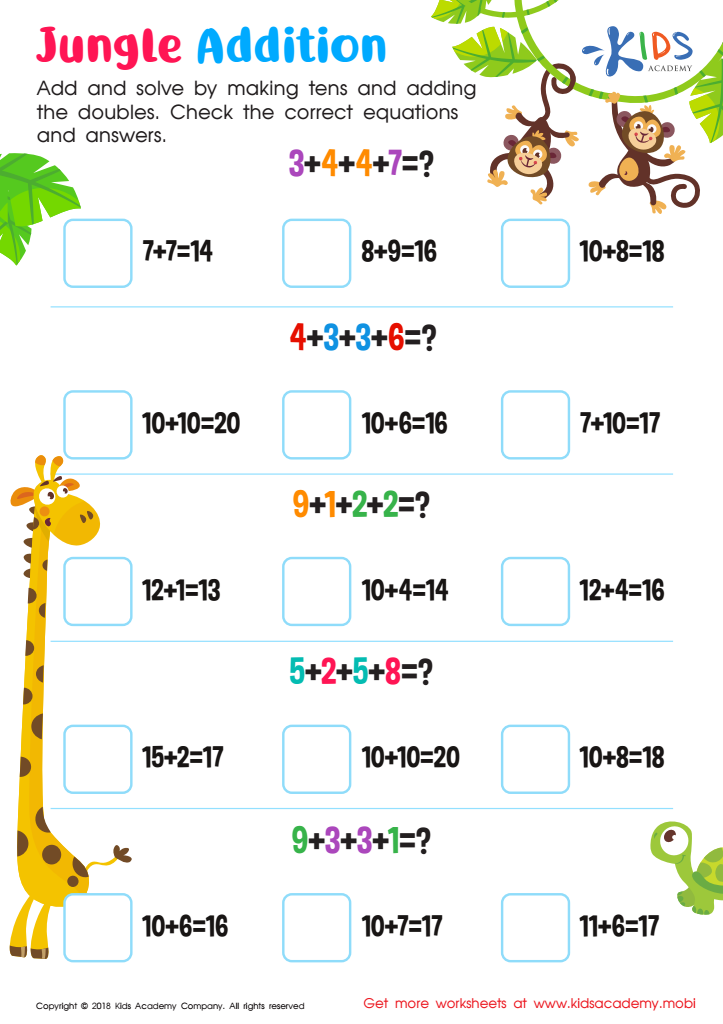

Jungle Addition Worksheet
Counting objects is a foundational skill for 7-year-olds that significantly influences their overall mathematical development and cognitive growth. At this age, children are transitioning from concrete representations of numbers to more abstract mathematical concepts. Engaging in counting activities helps solidify their understanding of quantity, number relationships, and basic arithmetic operations.
When parents and teachers emphasize counting, they nurture essential cognitive skills such as one-to-one correspondence, which lays the groundwork for comparing quantities and basic addition and subtraction. Counting objects also encourages critical thinking, as children learn to group items, recognize patterns, and develop problem-solving strategies.
Moreover, counting is not just a mathematical skill; it also fosters language development. Children articulate numbers, enhancing their vocabulary and communication abilities. This skill integrates seamlessly with everyday life, showing children the importance of math beyond classroom walls. Whether it’s counting toys, snacks, or steps, practical counting experiences promote engagement and retention.
Furthermore, consistent counting promotes confidence in math, countering potential anxiety around the subject as they grow. For these reasons, parents and teachers should prioritize counting activities, ensuring children develop robust mathematical literacy that will benefit them throughout their academic journeys.
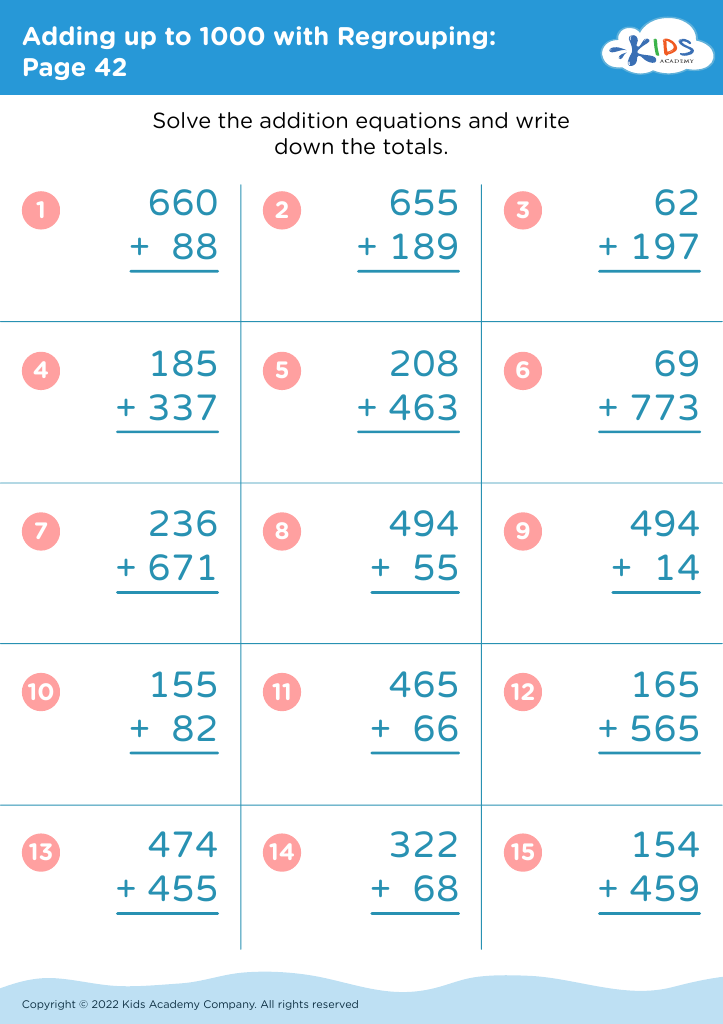

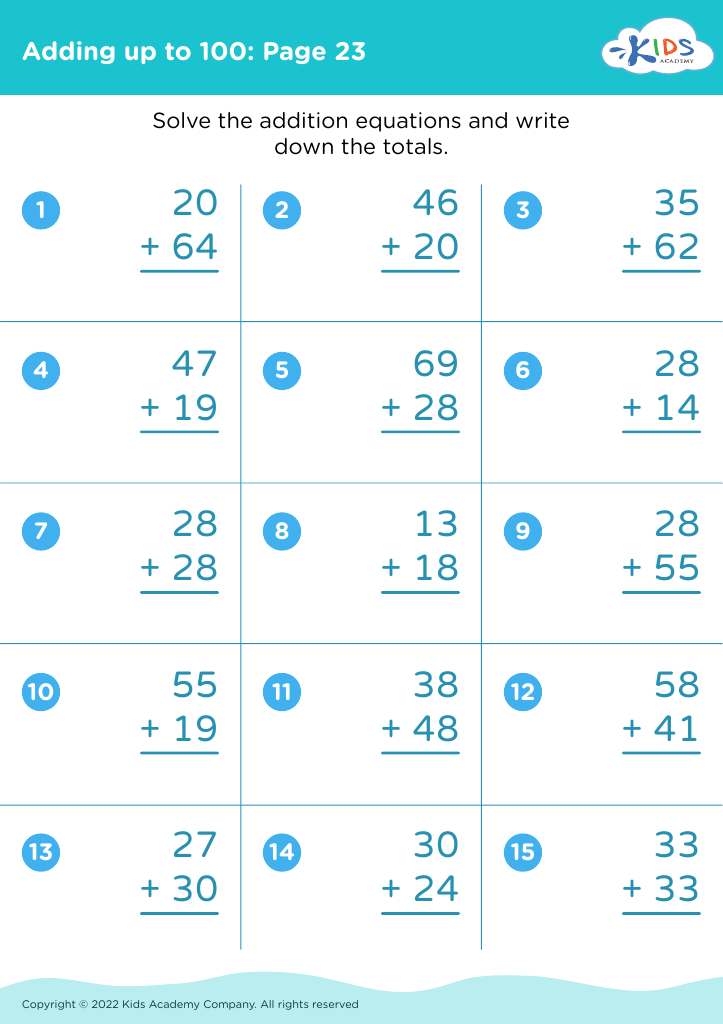
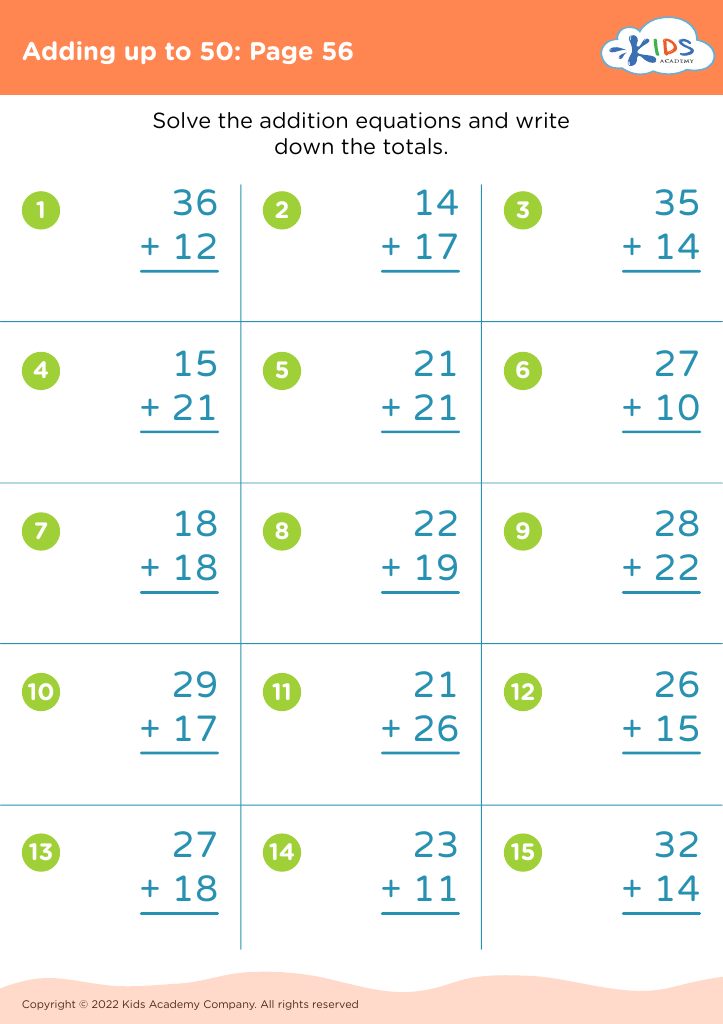
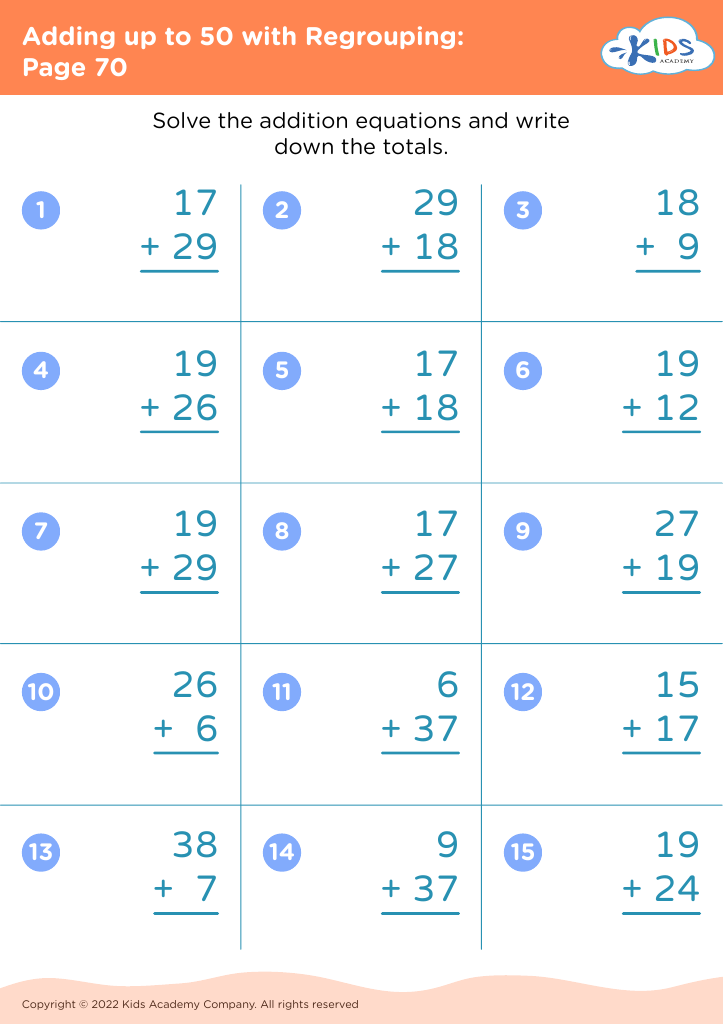
 Assign to My Students
Assign to My Students
